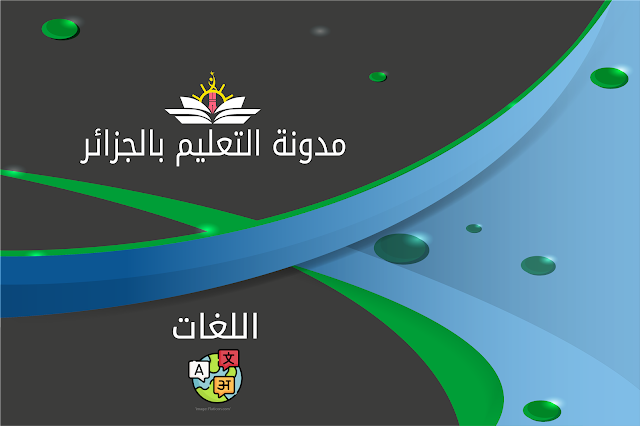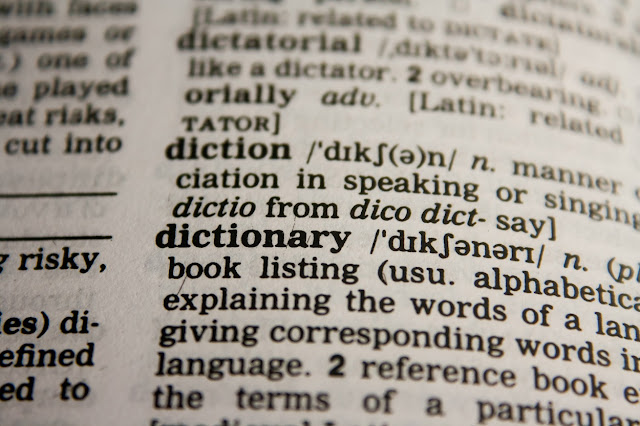أجدد المواضيع:
Kinds of Verbs in English
1. Transitive Verbs:
Transitive verbs are action verbs that have an object to receive that action.
• She drinks water.(object)
• He drove the car.(object)
2. Intransitive verbs:
intransitive verbs are actions verbs but unlike transitive verbs, they do not have an object receiving the action.
• The sun shines.
Basic sentence structure
Sentences are mode of clauses, and the simplest sentence has only one clause. In fact, sentences with only one clause are called "simple sentences". We're going to look at variations of only this kind of sentence, since these patterns are simply repeated in the additional clauses added to more complicated sentences ("compound sentences", "complex sentences", and "compound-complex sentences").
English Conjunctions
A conjunction may be used to indicate the relationship between the ideas expressed in a clause and the ideas expressed in the rest of a sentence.
1. Coordinate conjunctions
Coordinate conjunctions are used to join two similar grammatical constructions; for instance, two words, tow phrases or tow clauses. The sun rose and the birds began to sing.
Coordinate conjunctions
And: in addition. She tried and succeeded.
But: however. They tried but did not succeed.
Or: alternatively. Did you go out or stay at home?
Nor: and neither. I did not see it, nor did they.
Yet: however. The sun is warm, yet the air is cool.
2. Correlative conjunctions
Correlative conjunctions are used in pairs, in order to show the relationship between the ideas expressed in different parts of a sentence.
For example: Either you should study harder, or you should take a different course.
Correlative conjunctions
Both… and. He is both intelligent and good-natured.
Either… or. I will either go for a walk or read a book.
Neither… nor. He is neither rich nor famous.
Not only… but also she is not only clever, but also hard-working.
Rather…than I would rather go swimming than go to the library.
Whether…or Have you decided whether you will come or not?
3. Subordinate conjunctions
Subordinate clauses may begin with relative pronouns such as that, what, whatever, which, who and whom, as well as with words such as how, when, where, wherever and why. In the following examples, the subordinate clauses are underlined.
E.g. The house, which stood on a hill, could be seen for miles.
I wonder how he did that.
In addition, subordinate clause may also begin with words which are commonly referred to as subordinate conjunctions. In the following examples, the subordinate conjunctions are printed in bold type.
E.g. because it was cold, I wore my winter coat.
Let us wait until the rain stops.
The subordinate conjunctions below are accompanied by their meanings and examples of use.
Adjectives
An adjective describes or modifies nouns and pronouns in a sentence. It normally indicates quality, size, shape, duration, feelings, contents, and more about a noun or pronoun.
Adjectives usually provide relevant information about the nouns/pronouns they modify/describe by answering the questions: What kind? How many? Which one? How much? Adjectives enrich your writing by adding precision and originality to it.
Nouns
A noun is a word used to name something: a person/animal, a place, a thing, or an idea. For example, all of the following are nouns:
Leah, Ignacio, Science, Mark, Japan, Venezuela, Atlanta, Kroger, the Gap, Pencil, Store, Music, Air, Biology…etc.
Hint: They are sometimes preceded by noun markers. Noun markers are also called determiners and quantifiers. They are words like a, an, the, this, that, these, those, each, some, any, every, no, numbers (1, 2, 3, etc.), several, many, a lot, few, possessive pronouns (his, her, etc.).
Parts of speech (أقسام الكلام)
.The parts of speech explain how a word is used in a sentence
There are nine main parts of speech (also known as word classes): nouns, pronouns, adjectives, verbs, adverbs, prepositions, conjunctions, interjection and articles
Most parts of speech can be divided into sub-classes. Prepositions can be divided into prepositions of time; prepositions of place etc. nouns can be divided into proper nouns, common nouns, concrete nouns etc
Effect مقابل Affect: كيفية استخدام كل كلمة بشكل صحيح
وفقًا لـ Merriam-Webster، فإن "affect" تعني "إحداث تأثير على شيء ما".
Effect (بعبارة أوضح ، "أي تغيير يطرأ نتيجة لحُدوث شيء ما"). باختصار، يتم استخدام affect في الغالب كفعل، وغالبًا ما يكون effect اسمًا. كلودين جيمس، مُدرسة اللغة الإنجليزية في المدرسة الإعدادية والمعروف باسم iamthatenglishteacher على TikTok، لديها حل مفيد لمساعدتك على تذكر ذلك.






